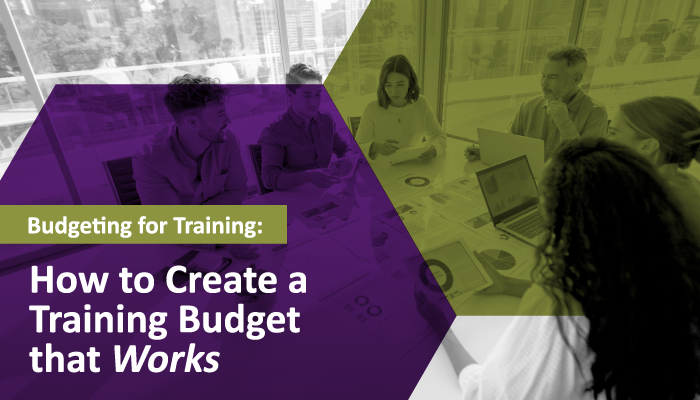
At TrainSMART, we’ve sat across the table from countless training managers who share the same worry:
“I know we need training, but how do I make the numbers work—and still deliver a program that actually sticks?”
If that sounds familiar, you’re not alone. Creating a training budget isn’t just about calculating costs—it’s about building a roadmap that aligns your program with your company’s goals, culture, and resources. And yes, it’s about making sure your CFO doesn’t faint when they see the total.
Here’s how we guide our clients through creating a realistic, impactful training budget that avoids surprises and gets results.
Step 1: Start With a Needs Assessment (Not a Calculator)
We’ve seen organizations pour thousands into a shiny new training program… only to discover the problem wasn’t a skills gap—it was a process issue. That’s why our first step with every client is a needs assessment.
Together, we explore:
- Where is the most significant performance gap?
- What will we gain by designing, delivering, and supporting this training?
- What resources exist—and what’s missing?
- What do the learners really need to succeed?
This conversation saves time, money, and frustration. It ensures training isn’t just a “check the box” activity, but a solution that genuinely moves the needle.
Step 2: Map Out the Real Costs (Even the Sneaky Ones)
When we build budgets with clients, we don’t stop at the obvious instructor fees. We dig into every cost that could sneak up later:
Instructor & Facilitation Costs
- Internal trainers or external experts
- Travel and lodging for in-person sessions
Materials & Learning Resources
- Workbooks, handouts, and manuals
- Assessments and third-party books
Technology Costs
- LMS subscriptions and licenses
- Online platforms for virtual sessions
Evaluation & Follow-Up
- Post-training surveys and reports
- Measurement tools to track ROI
TrainSMART Tip: We always pull past training budgets and highlight cost overruns or surprises. It’s like looking at old vacation photos—you quickly spot what worked, what didn’t, and where the “extra baggage fees” came from.
Step 3: Prioritize Costs Like You’re Buying a Car
One of our favorite metaphors for budgeting with clients is buying a car:
- Leather seats? Nice-to-have.
- Reliable engine? Non-negotiable.
Your training budget works the same way:
- Must-haves: The essentials that directly impact learning outcomes.
- Nice-to-haves: Enhancements that make training more engaging but aren’t critical.
- Trim candidates: Expenses you can reduce if budget cuts come knocking.
Knowing these priorities upfront keeps you in the driver’s seat if finance decides to “shave the budget” without warning.
Step 4: Plan for the Unexpected
Every training program has surprises. A last-minute facilitator flight, a software extension, a printer that quits the night before a workshop—we’ve seen it all.
Our approach? Build in a contingency buffer. It turns “panic moments” into simple adjustments.
Step 5: Evaluate, Adjust, and Celebrate Wins
A budget isn’t static—it’s a living tool. With our clients, we:
- Track actual vs. projected spending
- Gather participant and stakeholder feedback
- Adjust for next time to make every dollar work harder
This reflective step ensures that your budget tells a story of ROI, not just expenses.
The TrainSMART Difference
Creating a training budget can feel overwhelming—especially when leadership expects results and fiscal discipline. At TrainSMART, we’ve spent over 30 years helping organizations like yours create smart, sustainable budgets that lead to measurable results.
When you budget with clarity and confidence, you give your training programs the green light to succeed—and that’s where the real ROI begins.
Need a training partner who will guide you step-by-step—from needs assessment to post-training evaluation?
Connect with TrainSMART today and let’s design a program that works for your team and your bottom line.